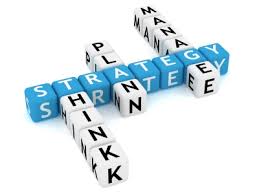Sustainability by Descending Order of Love
By Dani Robbins
Re-published with permission from nonprofitevolution blog
 The new normal has forced a lot of nonprofit leaders to rethink the way they do business. Crises, as unpleasant as they are to experience, allow for growth. I love Rahm Emanuel’s quote “Never let a good crisis go to waste.”
The new normal has forced a lot of nonprofit leaders to rethink the way they do business. Crises, as unpleasant as they are to experience, allow for growth. I love Rahm Emanuel’s quote “Never let a good crisis go to waste.”
The old normal, otherwise known as normal, to which we all ascribed went something like this: Have a diverse funding base. That way, if ever you lost a government grant, major donor, or foundation award, you could continue to provide services.
Then, as we all remember, the economic crisis of 2008/2009 came, with the compromise of every funding source we had and the end of life as we knew it.
It forced all of us to reassess.
So….what’s a good Executive Director and talented Board to do?
Change!
Think about every process and every assumption, put it on the table, look at it, talk about it and figure out if it still works for your organization. If it does, keep it. If it doesn’t, create a plan to evolve that process into one that better serves the organization and its need for revenue sustainability.
How do you work towards revenue sustainability? Some organizations do it with a consultant, some with a board member, some with a staff member or a donor.
Where do I start? I start with explaining the history of giving in the US and the fact that 80% of all financial gifts, grants and awards, including corporate and foundation giving, come from individuals. I then move on to explain that 80% of most non-profits’ income does not come from individuals.
What, then, do we have? Enormous Opportunity!
I then introduce the idea of descending order of love. Individual giving starts with the people who love you the most.
 Let’s get those people together and brain storm: Where are we today? Where do we want to go? How can we get there?
Let’s get those people together and brain storm: Where are we today? Where do we want to go? How can we get there?
Big gifts require big dreams and the capacity to engage people to help reach those dreams.
Get together and figure out your dreams, turn them into goals and then create a plan to meet those goals. Then, put together a list of current donors and a robust list of potential donors, also called prospects. Take a look at your current gift acceptance policies. (Revise or adopt as necessary) Once we have a goal, a plan, lists, and the requisite policies to increase the revenue for your organization, I move to descending order of love.
Your board, staff and major donors will be the foundation of any fundraising plan. Those who love you the most will support you the most. If sustainability were a board game, there would be a Start Here button.
Each board and staff member should make a significant gift. I can hear you thinking “Dani, significant is a fluid term.” Yes it is and that is intentional; my goal is always 100% Board and staff giving. It is critical that those closest to an organization financially support that organization. If they don’t, how can they ask someone else to?
Each board member should be asked in person for a specific gift, not the same gift as every other board member, but a specific gift o that board member which should be determined based what the staff and committee know about their capacity and level of engagement. If someone has enormous capacity but is not that engaged, a significant gift may be less than someone who has less capacity but is more engaged.
Who should do the asking? The person who is most likely to get a YES. Usually that’s another board member, but sometimes, it’s the Executive Director, or a volunteer.
Staff should also be asked to financially support the organization. Care should be taken to who should make that ask as well. I recommend a volunteer, because with fundraising and everything else, we want to avoid even the perception of impropriety.
Once we have 100% giving of staff and board, we move to our major donors and our prospect list and again, make specific in person asks. Prospects should be appropriately cultivated before they are asked for financial support. The definition of appropriate will change based on the individual and the need.
I consider major donors to be the top 10% of givers to your organization. It may be $250, it may be $25,000. It may be more and it may be less. If we continued to play our sustainability board game, there would be a This Way arrow here.
After major donor solicitation are completed, if you have the time and the volunteers, consider asking your larger mid level donors and prospects in person. Then move into your actual mid level donors and prospects. Those with the potential to become major donors should also be asked in person as should anyone who is committed to your organization. While we follow the path of descending order of love in planning, we love all of our donors equally. If someone would like to see you in person, even if it will be a small gift, go. It is fun to thank someone in person and is worth keeping a committed donor engaged. When that is not practical, the next best thing is a phone banks or phone calls.
Our Board game and our plan for income sustainability ends with an appeal letter to those who have not yet been asked or have been asked but have not given and also haven’t said no.
I invite you follow the descending order of love of path to sustainability. Please let me know how it goes. As always, I welcome your feedback.

